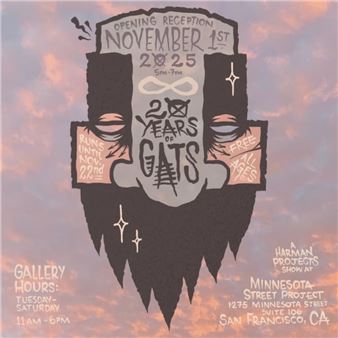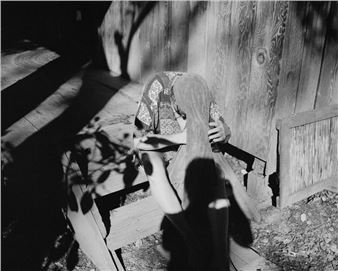Gauguin: A Spiritual Journey
In the first exhibition at the Fine Arts Museums dedicated to the work of Paul Gauguin (1848–1903), an exceptional display of more than fifty Gauguin paintings, wood carvings, and ceramics from the renowned collections of the Ny Carlsberg Glyptotek, Copenhagen, will be on view for the first time in San Francisco. Gauguin: A Spiritual Journey presents these pieces alongside Oceanic art and Gauguin works on paper from the Fine Arts Museums’ permanent collections.
The exhibition explores Gauguin’s inner quests and imaginings—his spiritual journey—and how his intimate relationships with his wife, other artists, and people he encountered during his sojourns shaped his experiences, his work, and his development as an artist. What was Gauguin seeking? Above all, he aspired to succeed and innovate as an artist. His relationships with artists and dealers influenced his practice. His artistic quest led him to work in different media, including ceramics and wood, and to travel beyond France to the far reaches of the French colonial empire in the Pacific. He drew inspiration from his visits to remote locales and a vast visual archive of photography and global art that he gathered throughout his life. In Gauguin: A Spiritual Journey, carvings and images from New Zealand, the Marquesas Islands, and Tahiti are included in a chronological presentation spanning Gauguin’s career, from his earliest paintings dating from the 1870s to iconic paintings from his later years in the Pacific, plus more than a dozen ceramics. The stories of Gauguin’s relationships—romantic, platonic, and familial—highlighted throughout the exhibition reveal the struggles, indulgences, awakenings, and betrayals of his personal and professional life that infused his extraordinary and enigmatic art.

Recommended for you
In the first exhibition at the Fine Arts Museums dedicated to the work of Paul Gauguin (1848–1903), an exceptional display of more than fifty Gauguin paintings, wood carvings, and ceramics from the renowned collections of the Ny Carlsberg Glyptotek, Copenhagen, will be on view for the first time in San Francisco. Gauguin: A Spiritual Journey presents these pieces alongside Oceanic art and Gauguin works on paper from the Fine Arts Museums’ permanent collections.
The exhibition explores Gauguin’s inner quests and imaginings—his spiritual journey—and how his intimate relationships with his wife, other artists, and people he encountered during his sojourns shaped his experiences, his work, and his development as an artist. What was Gauguin seeking? Above all, he aspired to succeed and innovate as an artist. His relationships with artists and dealers influenced his practice. His artistic quest led him to work in different media, including ceramics and wood, and to travel beyond France to the far reaches of the French colonial empire in the Pacific. He drew inspiration from his visits to remote locales and a vast visual archive of photography and global art that he gathered throughout his life. In Gauguin: A Spiritual Journey, carvings and images from New Zealand, the Marquesas Islands, and Tahiti are included in a chronological presentation spanning Gauguin’s career, from his earliest paintings dating from the 1870s to iconic paintings from his later years in the Pacific, plus more than a dozen ceramics. The stories of Gauguin’s relationships—romantic, platonic, and familial—highlighted throughout the exhibition reveal the struggles, indulgences, awakenings, and betrayals of his personal and professional life that infused his extraordinary and enigmatic art.
Artists on show
Contact details

Related articles
The Fine Arts Museums of San Francisco (FAMSF) are proud to announce “Gauguin: A Spiritual Journey,” debuting at the de Young museum on November 17.
The Fine Arts Museums of San Francisco will open Gauguin: A Spiritual Journey, debuting at the de Young museum on November 17.
The French artist Paul Gauguin’s paintings inspired by Polynesia are renowned and influential for their brilliant color, exotic locales and air of mystery.
Paul Gaugin made the observation that, “We never know what stupidity really is until we have experimented on ourselves.”

 ARTISTS
ARTISTS














